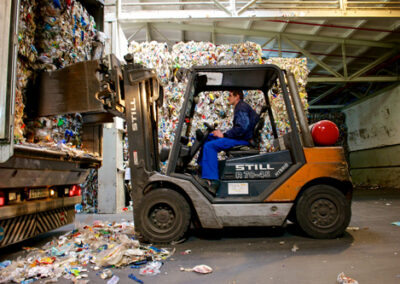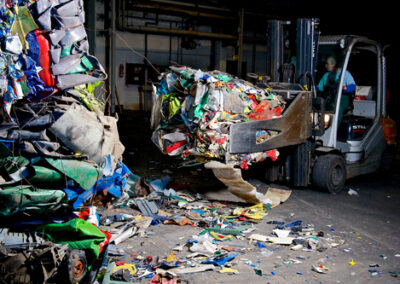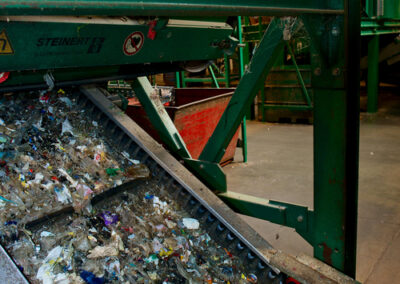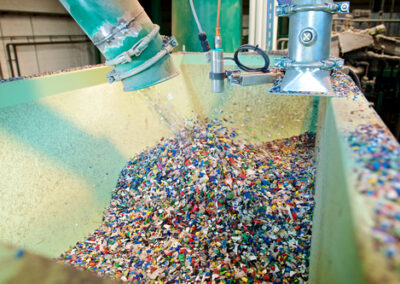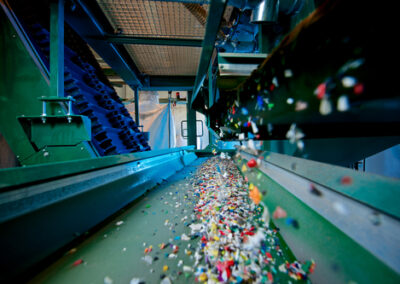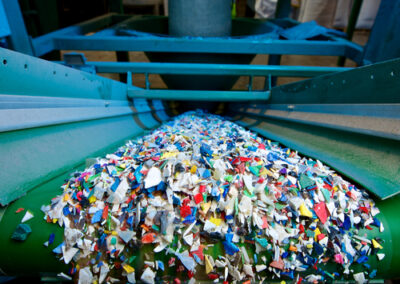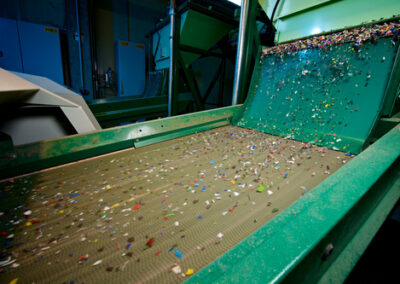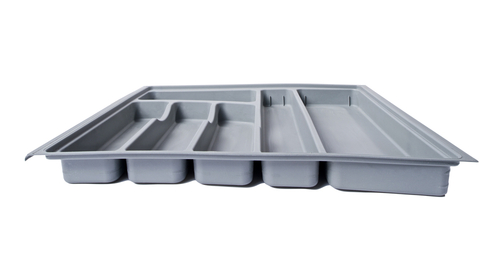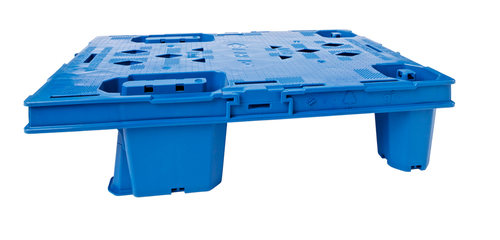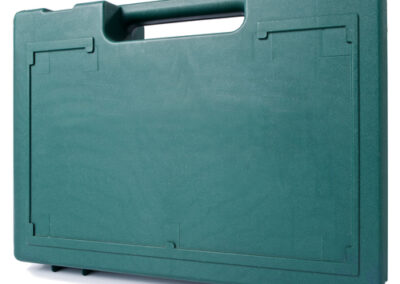Ausgangsmaterial
Material für unser „Upcycling“
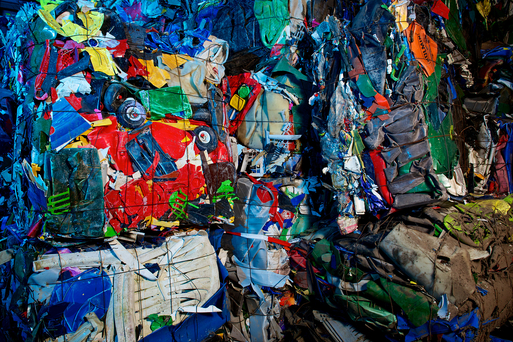
mtm verarbeitet Polyethylen (PE-) und Polypropylen (PP)-Kunststoffe aus
- vorsortierten Kunststoffmischungen
- Gewerbe- und Industrieabfällen (s. Produktspezifikation MPO-GI)
- Sperrmüllsammlungen
- Haushaltssammlungen
alle Produktspezifikationen
Herstellung
Recyling economy

1. Vorsortiertes Material trifft ein
Gebrauchte Kunststoffe aus Hausmüll, Gewerbebetrieben und kommunalen Sperrmüllsammlungen werden vorsortiert und als Gemisch aus Polyethylen und Polypropylen an den Recyclingbetrieb geliefert.
2. Zerkleinerung
Das vorsortierte Material wird geschreddert und von Verunreinigungen wie Glas, Metall, Holz und Sand gereinigt.
3. Waschen, Trennen und Sortieren
Das zerkleinerte Material wird gewaschen und thermisch getrocknet. Ein Teil des gewaschenen Materials durchläuft einen zusätzlichen Sortierschritt, um es nach Kunststoffart und Farbe zu trennen.
4. Extrudieren des Materials zu Rezyklaten
Nun wird das Material den Extrudern zugeführt. Das Material wird verdichtet, geschmolzen, gefiltert, entgast, homogenisiert und granuliert. Die Rezyklate durchlaufen im Labor eine abschließende Qualitätskontrolle, bevor sie in den Transport zu den Kunden gehen.
5. Endprodukte aus recycelten Polyolefinen
Kunststoff verarbeitende Betriebe verwenden diese Rezyklate zur Herstellung von Produkten für den Gartenbau, das Baugewerbe, Verpackungen, verschiedene Haushaltsartikel und vieles mehr.
Anwendung
Lösungen für Ihren Anwendungsfall
Wir bieten eine breite Palette von Regranulaten an, die für Ihre Anwendungszwecke geeignet sind.
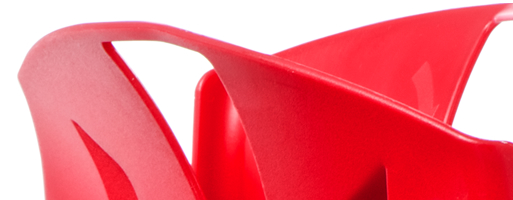
Unsere Markenprodukte im Einsatz
Regranulate von mtm plastics finden sich in vielen hochwertigen Endprodukten wieder.
Anwendungsbeispiele aus Dipolen™:
- Haus- und Gartenmöbel und Zubehör
- Dachrinnen
- Eimer
- Bau- und Konstruktionshilfen und -zubehörteile
- Schutzverpackungen wie Kantenschoner und Schutzhüllen
- Profile
- Fenster-Keile
- Schalungsunterstützungen
- Kompostierer
- Rohre und Rollen für verschiedene Zwecke
- Boxen
- Rohrverbindungsmuffen
- Kästen für Küken
- Rasengitter
Anwendungsbeispiele aus Purpolen™:
- Paletten
- Betonabstandhalter
- Kisten
- Mülleimer
- Stifte
- Malerbedarf
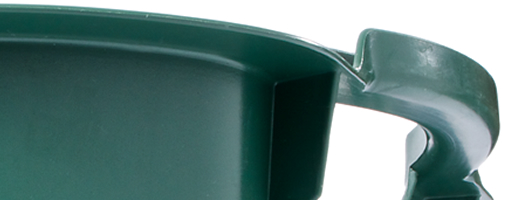
Design for Recyclability
In Abstimmung mit vielen Branchenvertretern sind zehn griffige Kodizes für ein recyclinggerechtes Design entstanden (nur in englischer Sprache). Sie wenden sich an alle Verpackungsexperten, die sich für den Zusammenhang ihrer Designentscheidungen mit dem Kunststoffrecycling interessieren.
10 Codes of Conduct for Design for Recyclability (DfR)
Polyolefins (PE and PP) are an ideal material for designing flexible and rigid packaging that can be recycled and these Design for Recyclability (DfR) Codes should be adopted to optimise their recyclability.
DfR incorporates recycling codes of conduct into the design process keeping in mind the end-of-life aspects after its original intended use. These DfR Codes are an essential tool for delivering to market plastic packaging, with the right functionalities, yet also, helps conserve natural resources and minimise waste (including product waste) disposal or incineration and littering. DfR can maximise recycling rates for all kinds of plastic packaging because it makes separation and reprocessing more efficient. It also ensures the steady and affordable supply of high-quality recyclates, from so called “recycling-ready” packaging. Those recyclates also have a significantly lower CO2 footprint and require less fossil fuel in the manufacturing process versus production of virgin resin.
While there are many aspects of plastic packaging design that make packaging “recycling-ready”, we have identified three key overarching codes of conduct when designing for the function (such as preservation, safety and wastage) of the packaging:
- Use as few different polymer types, components and materials as possible in the design of the overall packaging. This applies to all packaging components such as the body, closures (caps, liners seals), lidding and any other additional components.
- Make it easy to strip and/or wash off all decoration (such as labels, sleeves, adhesives, printing and inks) from the main functional part of the packaging
- By no means, should packaging designed according to the DfR Codes impact the preservation/protection the food or product, however do ensure that the requirement is really necessary and not over-engineering.
The following “do’s and don’ts” help our partners and customers navigate the relatively new and complex field of DfR in Polyolefins. These codes are based on current circumstances and technologies used in European countries and we recommend that you regularly consult trade and industry bodies such as Plastics Recyclers Europe and the Institute Cyclos-HTP in order to stay up to date on emerging technologies, waste stream evolutions, application-specific DfR guidelines, recyclability assessments and new sorting and reprocessing capabilities.
Download: 10 Codes of Conduct (PDF)
Read more: https://www.borealiseverminds.com/
